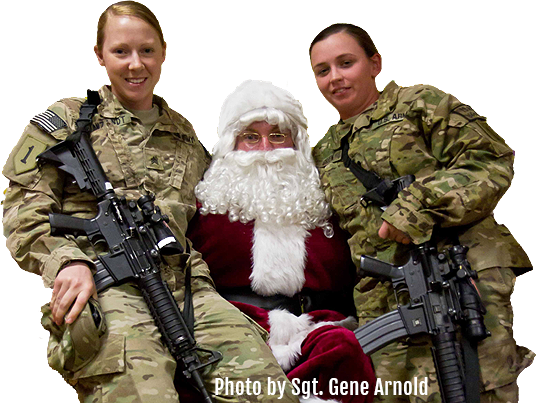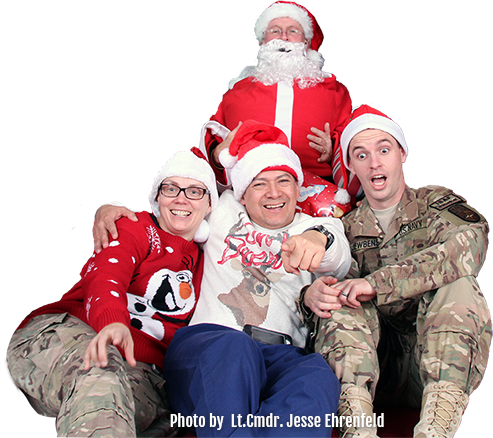[caption id="attachment_4005" align="alignleft" width="300"] Coast Guard Cmdr. Diane W. Durham, head of the Professional Maritime Studies Department at the Coast Guard Academy, instructs second class cadets during an exercise on a training boat on the Thames River near New London, Conn., April 4, 2011. U.S. Coast Guard photo by Petty Officer 2nd Class Timothy Tamargo[/caption] NEW LONDON, Conn. – U.S. Coast Guard officers are presented with many challenges and opportunities. Normal operations may quickly turn into a life or death mission that challenges their training and experience.
Coast Guard Cmdr. Diane W. Durham, head of the Professional Maritime Studies Department at the Coast Guard Academy, instructs second class cadets during an exercise on a training boat on the Thames River near New London, Conn., April 4, 2011. U.S. Coast Guard photo by Petty Officer 2nd Class Timothy Tamargo[/caption] NEW LONDON, Conn. – U.S. Coast Guard officers are presented with many challenges and opportunities. Normal operations may quickly turn into a life or death mission that challenges their training and experience.
 Coast Guard Cmdr. Diane W. Durham, head of the Professional Maritime Studies Department at the Coast Guard Academy, instructs second class cadets during an exercise on a training boat on the Thames River near New London, Conn., April 4, 2011. U.S. Coast Guard photo by Petty Officer 2nd Class Timothy Tamargo[/caption] NEW LONDON, Conn. – U.S. Coast Guard officers are presented with many challenges and opportunities. Normal operations may quickly turn into a life or death mission that challenges their training and experience.
Coast Guard Cmdr. Diane W. Durham, head of the Professional Maritime Studies Department at the Coast Guard Academy, instructs second class cadets during an exercise on a training boat on the Thames River near New London, Conn., April 4, 2011. U.S. Coast Guard photo by Petty Officer 2nd Class Timothy Tamargo[/caption] NEW LONDON, Conn. – U.S. Coast Guard officers are presented with many challenges and opportunities. Normal operations may quickly turn into a life or death mission that challenges their training and experience.Coast Guard Cmdr. Diane W. Durham became the head of the Professional Maritime Studies Department here during the summer of 2010. She leads 17 military and civilian instructors and staff, and oversees the nautical science training of the more than 1,000 members of the academy’s corps of cadets.A few months earlier Durham had put her experience to the test as commander of the Coast Guard Cutter Forward. She and her crew were pressed into action in response to a 7.0 magnitude earthquake that struck less than 15 miles from Port-au-Prince, Haiti, Jan. 12, 2010. The Forward was on deployment, Durham recalled, and recently had arrived in Guantanamo Bay, Cuba, when the earthquake occurred. "The duty section and off-duty crew onboard were jolted by unusual movement of the ship and quickly gathered to respond to an onboard emergency,” she said. “We learned that it was an earthquake, and soon after, we learned of the devastation in Port-au-Prince. “The crew was recalled from various points around the base,” Durham continued, “and we were underway by 10 p.m. We made best speed through the night.” Durham’s cutter was the first U.S. vessel to arrive in Haiti for the earthquake response mission. During the response, Durham said her crew members conducted numerous missions, including search and rescue, air traffic control, port assessments, damage assessment overflights and medical evacuations. Durham and her crew were recognized for their exceptional work during the response effort. On July 4, 2010, Durham represented the Coast Guard at the White House and was commended by President Barack Obama for the Haiti relief efforts. “We salute the United States Coast Guard, including a Coast Guardsman who commanded the first U.S. vessel to arrive in Haiti after the earthquake, helping to pave the way for one of the most complex humanitarian efforts ever attempted, Cmdr. Diane Durham,” Obama said. At the height of the response in mid-January, the Coast Guard had up to eight cutters in Haiti’s ports, in the Caribbean and in Florida waters. Air assets included a HC-144A Ocean Sentry aircraft, five HC-130 Hercules aircraft, three MH-65 Dolphin helicopters and three MH-60 Jayhawk helicopters operating in Haiti with more than 800 Coast Guard members providing assistance on shore, afloat on the cutters and in the air. Durham said she emphasized an open and honest command climate built on trust and communication. “Being on a cutter requires people to embody the term shipmate," she said. “You live together, work together, struggle together and succeed together for long periods of time. You become a family.” This command climate directly impacted Durham’s crew. “Commander Durham is very dedicated to the overall mission of the Coast Guard. I have sought after her council for stressful situations on several occasions,” said Senior Chief Petty Officer Nicole Rose, the command chief on the Forward. “What makes a good leader is looking out after your people, dedication, motivation, compassion and the ability to expertly handle difficult situations. This is a talent too few have and many more need.” Durham has served more than nine years at sea during her 21-year career on the Coast Guard cutters Rush, Decisive, Resolute, Tampa and Forward. Durham said she now brings her knowledge and experience from the fleet into the classroom to train and teach cadets, officer candidates, prospective commanding officers and executive officers. “It’s important to have officers from the fleet as instructors because they know what is expected of junior officers in their first tours and what will help us achieve success when we enter the workforce,” said First Class Cadet Amanda Cousart, a marine and environmental science major at the academy. “Teaching cadets and other Coast Guard personnel is a way to make sure all of the information Commander Durham has learned is passed on so future officers can make the Coast Guard thrive.” First Class Cadet Dana Prefer echoed Cousart’s sentiments. “I think that Commander Durham is a wealth of knowledge because she has done almost everything you can do in the afloat community,” Prefer said. “When she told us about her past jobs, I was very impressed that she held that many command positions and highly-sought-after billets. I believe that due to her diverse career path,” Prefer added, “she is able to get through to her students effectively, and I see her as a very good model of what a leader should be.” April 7, 2011: By Coast Guard Petty Officer 2nd Class Timothy Tamargo- U.S. Coast Guard Academy Public Affairs






